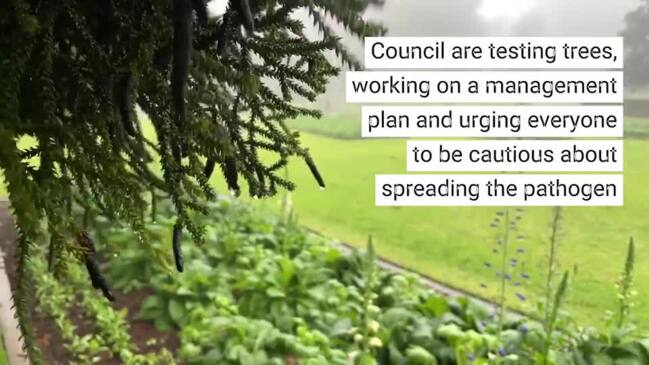Toowoomba Regional Council discovers phytophthora in park trees
A pathogen with potentially devastating consequences has been found in Toowoomba’s most famous park, just weeks before the city opens its gardens to visitors.

Toowoomba
Don't miss out on the headlines from Toowoomba. Followed categories will be added to My News.
A potentially devastating discovery has been found by a regional Queensland council only weeks before its annual garden festival is set to commence.
Trees across Toowoomba and within the city’s beloved Queens Park have shown symptoms of distress, prompting Toowoomba Regional Council to identify phytophthora, or pathogenic water mould as the cause.
The pathogen came to Australia in the 1920s, and its some 200 species can be devastating to a broad range of plants across the country from agricultural crops to horticulture and forestry across the country.
● The diamond Jubilee of the Toowoomba Carnival of Flowers
Two of those species, phytophthora multivora and phytophthora cinnamomi, are believed to be the cause of bunya dieback, where the tree slowly dies, unable to retrieve water and nutrients from the soil, eventually leaving behind the tree’s bare skeleton.
The council is now testing identified trees around Toowoomba as to whether or not they have been infected with one of these two types of phytophthora, parks services portfolio councillor Tim McMahon said.

While the council investigates further, they are currently building a management plan for the pathogen in the future, but for now, assured the public that Queens Park will remain open.
As the pathogen is spread through soil, Mr McMahon said he encouraged anyone who might be disturbing ground near infected trees to be cautious, and wash their shoes and equipment to avoid carrying it to other parts of the region.
“Council will be implementing plant and soil hygiene and wash down procedures where teams are working with trees that have tested positive to phytophthora,” he said.
The pathogen is known to affect bunya and hoop pines within southeast Queensland, particularly in parts of the Sunshine Coast and the Bunya Mountains.
The extent of the threat is still being understood, said University of Southern Queensland’s associate professor Sambasivam Periyannan.
Currently working on research to better understand bunya trees resistance to phytophthora, Dr Periyannan said they are still learning about how the pathogen works, the extent of its destruction, and what other trees are affected.
Besides human, he said the biggest problem were feral pigs in the spread of the pathogen within the Bunya Mountains.
Dr Periyannan said working alongside the Bunya People’s Aboriginal Corporation, Toowoomba Council, the relevant government departments, and any commercial forestry organisations would help develop best practices to understand and contain the pathogen.
More Coverage
Originally published as Toowoomba Regional Council discovers phytophthora in park trees




